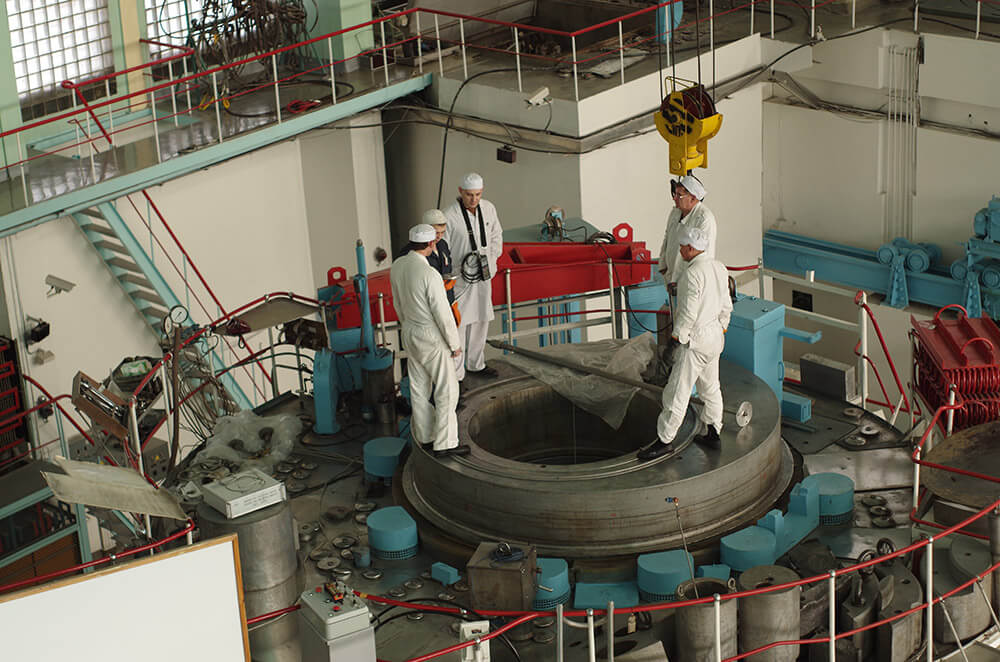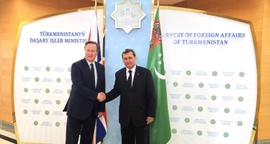Kazakhstan, once the owner of a large nuclear test site, is planning to establish another radioactive waste management center in Almaty, the country’s largest city, and energy officials are looking for some help on how to prevent radioactive contamination of what is Central Asia’s largest country.
Yergazy Kenzhin, who heads the Institute of Nuclear Physics in Kazakhstan, said this week the nuclear waste storage covering 0.4 acres is expected to be commissioned in 2021. The service life of the facility, which will be located within the institute, is said to be 50 years.
Although the project was designed at a time when Kazakhstan was a part of the Soviet Union, the government of what was the world’s second-largest nuclear power had not allocated funds for its implementation. Officials in Kazakhstan claim that the green light for the nuclear waste repository in Almaty will come on once the United States joins the project.
“The U.S. Department of Energy will allocate money for [storage's] construction as part of a program for the global reduction of the threat of terrorism,” Kenzhin said Wednesday, according to a report by Informburo.
“That is, they [the U.S.] create technical and physical barriers to the access of ionizing radiation sources to reduce the number of "dirty bombs" in the world,” he added, meaning a speculative radiological weapon that combines radioactive material with conventional explosives.
At the same time, the institute did not reveal the cost of the project.
The storage depth will be 7.5 meters, while the tightness control of capsules and storage wells is planned to be carried out twice a year. If the tightness is broken, the capsules will be repackaged.
Kazakhstan has long been trying to reprocess nuclear waste that the country inherited from the Soviet Union’s nuclear industry, after gaining independence in 1991, and Washington has been helping the Central Asian country in this issue since 1994.
In 1994, governments of the United States and Kazakhstan launched a covert project dubbed “Sapphire” in order to reduce the threat of nuclear proliferation, as part of the U.S. Department of Defense’s Cooperative Threat Reduction Program. The U.S. has ultimately removed nearly 600 kilograms (1,100 lbs) of weapons-grade enriched uranium placed in a warehouse at the Ulba Metallurgical Plant outside Ust-Kamenogorsk.
More recently and in 2017, Kazakhstani scientists from the Institute of Nuclear Physics and the U.S. National Nuclear Security Administration reprocessed more than 200 kilograms (441 lbs) of HEU – enough fissile material to create eight nuclear warheads.
Meanwhile, there are already two nuclear waste storages – one for low-level and another for medium-level waste – at the Institute of Nuclear Physics, which has been operating since 1957. According to Kenzhin, these facilities are already filled in more than 80 percent, and that is why the new storage will increase the safety of the institute.
The new facility is supposed to store radioactive isotopes of iridium, cesium, antimony and radium, as well as various abandoned low- and medium-active sources of ionizing radiation until a waste burial site is created in Kazakhstan.
“There are no facilities in Kazakhstan where sources can be taken out to for burial. As soon as such [facility] is established, all sources will be transported there,” said Evgeny Ermakov, who heads the center for non-destructive testing methods at the institute.







 Turkmen President Serdar Berdimuhamedow and British Secretary of State for Foreign Affairs, Commonwealth Affairs, and Development David Cameron dis...
Turkmen President Serdar Berdimuhamedow and British Secretary of State for Foreign Affairs, Commonwealth Affairs, and Development David Cameron dis...
 A draft resolution aimed at preventing the development and deployment of weapons of mass destruction (WMDs) in outer space, co-sponsored by Japan a...
A draft resolution aimed at preventing the development and deployment of weapons of mass destruction (WMDs) in outer space, co-sponsored by Japan a...
 Russia and Ukraine have engaged in direct negotiations facilitated by Qatar to address the exchange of children affected by the ongoing conflict.
Russia and Ukraine have engaged in direct negotiations facilitated by Qatar to address the exchange of children affected by the ongoing conflict.



